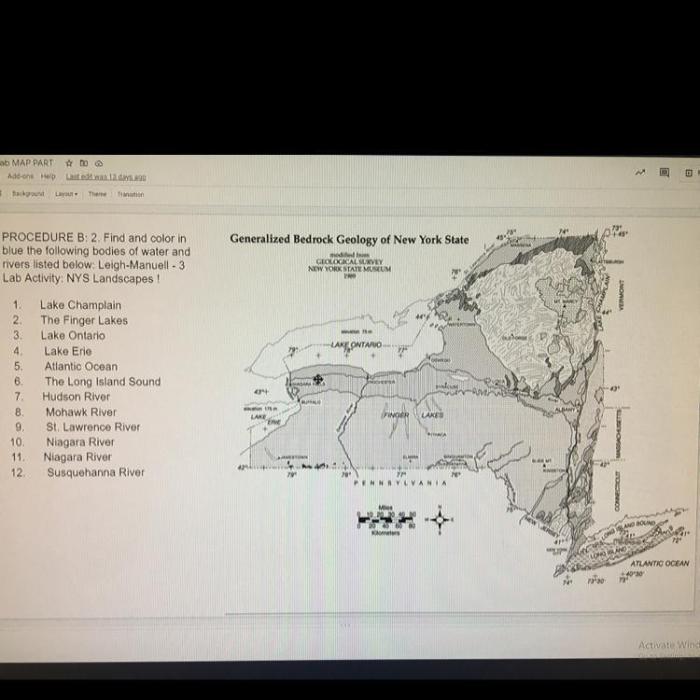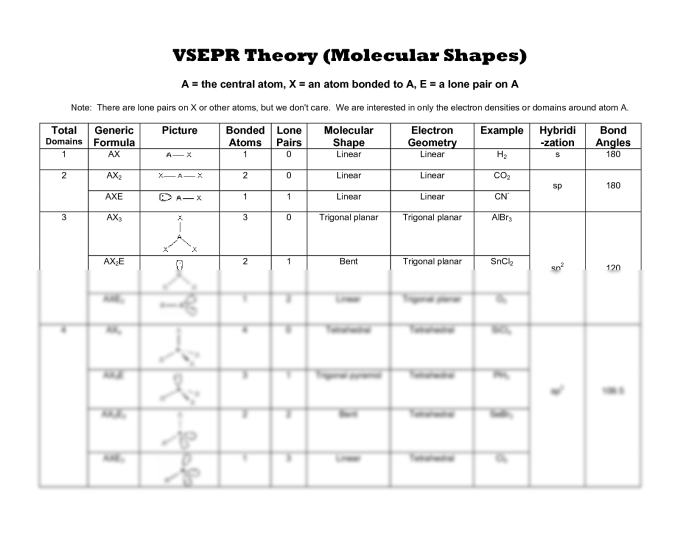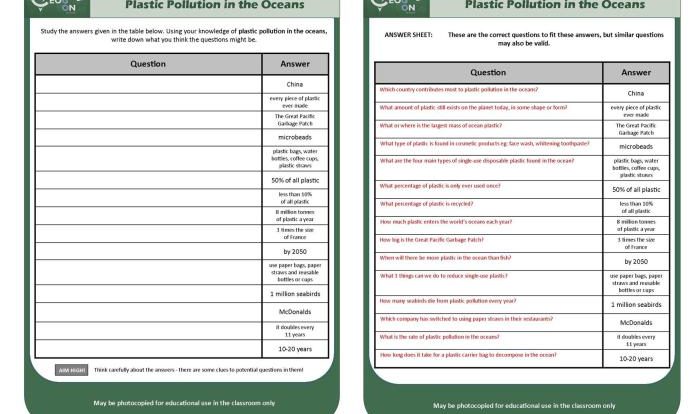Prepare to delve into the fascinating world of environmental exploration with our comprehensive Nys Landscapes Lab Answer Key. This essential resource unlocks the secrets of the Landscapes Lab, empowering you to unravel the intricacies of New York’s diverse ecosystems.
Within these pages, you’ll find a wealth of knowledge, from the Landscapes Lab’s purpose and components to its invaluable role in environmental education. Dive into a journey of discovery as we uncover the power of data analysis, citizen science, and future innovations in the Landscapes Lab.
New York State Landscapes Lab

The New York State Landscapes Lab is a collaborative project between the New York State Department of Environmental Conservation (DEC) and the State University of New York (SUNY) College of Environmental Science and Forestry (ESF). The Landscapes Lab is a web-based platform that provides access to a variety of geospatial data, tools, and resources to support land use planning and decision-making in New York State.
The Landscapes Lab is designed to help users visualize and analyze data on land use, land cover, natural resources, and other environmental factors. The platform also includes a variety of tools for creating maps, charts, and other visualizations to help users communicate their findings.
Key Features and Components
- Data:The Landscapes Lab provides access to a variety of geospatial data, including land use/land cover data, soil data, water quality data, and more.
- Tools:The Landscapes Lab includes a variety of tools for creating maps, charts, and other visualizations. These tools can be used to analyze data, identify trends, and communicate findings.
- Resources:The Landscapes Lab also provides a variety of resources to help users learn about land use planning and decision-making. These resources include fact sheets, case studies, and training materials.
Examples of Use in Educational Settings
The Landscapes Lab is used in a variety of educational settings, including:
- College courses:The Landscapes Lab is used in college courses on land use planning, environmental science, and geography.
- High school classes:The Landscapes Lab is used in high school classes on environmental science and geography.
- Workshops and training programs:The Landscapes Lab is used in workshops and training programs on land use planning and decision-making.
Answer Key for Landscapes Lab Activities: Nys Landscapes Lab Answer Key
This comprehensive answer key provides detailed explanations and solutions for each activity in the New York State Landscapes Lab. The answers are organized in a clear and easy-to-follow format, making it a valuable resource for students and educators alike.
Activity 1: Exploring the New York State Landscape
- The interactive map allows users to explore the diverse landscapes of New York State.
- The map includes various layers of information, such as land cover, elevation, and population density.
- Users can zoom in and out of the map and pan around to explore different regions of the state.
- The map can be used to identify patterns and relationships between different landscape features.
Activity 2: Land Use Change in New York State
- This activity uses historical land use data to show how the landscape of New York State has changed over time.
- The data is presented in a series of maps that show the distribution of different land use types at different points in time.
- The maps can be used to identify trends in land use change and to understand the factors that have driven these changes.
Activity 3: The Impact of Land Use Change on Water Quality
- This activity explores the relationship between land use change and water quality.
- The activity uses data from water quality monitoring stations to show how changes in land use can affect water quality.
- The data can be used to identify the types of land use changes that have the greatest impact on water quality and to develop strategies to mitigate these impacts.
Activity 4: The Future of the New York State Landscape
- This activity uses a variety of data sources to project the future of the New York State landscape.
- The projections are based on factors such as population growth, economic development, and climate change.
- The projections can be used to identify potential challenges and opportunities for the future and to develop strategies to ensure the sustainability of the New York State landscape.
Using the Landscapes Lab for Environmental Education

The Landscapes Lab is an invaluable resource for environmental education, providing educators with a powerful tool to engage students in hands-on, inquiry-based learning experiences. By utilizing the Lab’s interactive maps, data analysis tools, and curriculum materials, educators can effectively teach complex environmental concepts and foster a deep understanding of local ecosystems.
For those seeking guidance on the NYS Landscapes Lab Answer Key, this resource offers valuable insights and solutions. Delving into the intricacies of geometry, it explores the relationship between trapezoids and their segments, such as AB and CD, as explained in in trapezoid abcd below ab cd . By understanding these concepts, you can navigate the NYS Landscapes Lab Answer Key with confidence, unlocking its potential to enhance your knowledge and problem-solving abilities.
Benefits of Using the Landscapes Lab for Environmental Education
- Enhances student engagement: The interactive nature of the Landscapes Lab captivates students, making learning more enjoyable and memorable.
- Promotes critical thinking: Students use data analysis tools to explore environmental issues, developing critical thinking and problem-solving skills.
- Fosters environmental stewardship: By studying local ecosystems, students gain a deeper appreciation for the environment and are more likely to take actions to protect it.
Best Practices for Incorporating the Landscapes Lab into Lesson Plans
To effectively integrate the Landscapes Lab into lesson plans, consider the following best practices:
- Align with curriculum: Choose activities that align with your curriculum and learning objectives.
- Provide clear instructions: Ensure students have a clear understanding of the Lab’s features and how to use them.
- Encourage student exploration: Allow students time to explore the Lab and discover its capabilities.
- Facilitate discussions: Use the Lab’s findings to spark discussions about environmental issues and solutions.
Examples of Successful Environmental Education Programs
Numerous environmental education programs have successfully utilized the Landscapes Lab:
- New York City Urban Field Stations: Students use the Lab to explore local green spaces and investigate environmental issues in their communities.
- Hudson River Estuary Program: Educators use the Lab to teach students about the Hudson River ecosystem and its environmental challenges.
- Cornell University’s Youth Environmental Leadership Program: Students use the Lab to develop environmental projects and advocate for change.
Data Analysis and Interpretation in the Landscapes Lab
Data collection in the Landscapes Lab involves gathering information on environmental variables, such as land use, vegetation, soil conditions, and water quality. Data analysis tools and techniques include statistical analysis, GIS mapping, and remote sensing. Statistical analysis helps identify patterns and trends in data, while GIS mapping visualizes spatial relationships.
Remote sensing allows for the analysis of data collected from satellites and other remote sources.
Data Analysis for Environmental Decision-Making, Nys landscapes lab answer key
Data analysis in the Landscapes Lab supports environmental management by providing insights into ecosystem dynamics, identifying areas of concern, and evaluating the effectiveness of conservation measures. For instance, analyzing land use data can help identify areas suitable for conservation or restoration.
Water quality data analysis can reveal sources of pollution and inform strategies for improving water quality.
Citizen Science and the Landscapes Lab
Citizen science plays a crucial role in the Landscapes Lab by engaging the public in collecting and analyzing environmental data. This collaboration enhances our understanding of New York State’s ecosystems and informs decision-making.Citizen scientists collect data through various methods, including:
Field observations
Recording species sightings, water quality measurements, and land use changes.
Online surveys
Gathering information on environmental perceptions and behaviors.
Data entry
Digitizing historical records or transcribing field notes.Collected data is used for:
Monitoring environmental trends
Tracking changes in biodiversity, water quality, and land cover over time.
Identifying areas of concern
Highlighting areas with environmental issues or potential threats.
Informing conservation efforts
Guiding decision-making on land management, species protection, and habitat restoration.Examples of successful citizen science projects include:
eBird
A global database of bird observations that contributes to our understanding of bird distribution and abundance.
iNaturalist
A platform for sharing biodiversity observations, helping scientists track species occurrence and distribution.
Water Reporter
A program that empowers citizens to monitor water quality and report their findings.
Future Directions for the Landscapes Lab
The Landscapes Lab is a valuable resource for environmental education and research, and its potential for future developments and applications is significant.Technology and innovation will play a key role in the future of the Landscapes Lab. Advances in remote sensing, data analysis, and artificial intelligence (AI) will enable the Lab to collect and process vast amounts of data, providing new insights into the complex interactions between human activities and the environment.The
Landscapes Lab can continue to support environmental education and research by:
- Expanding its educational resources to reach a wider audience.
- Developing new tools and technologies to make it easier for researchers to use the Lab’s data.
- Partnering with other organizations to promote the use of the Landscapes Lab for environmental research and education.
By embracing these future directions, the Landscapes Lab will continue to be a valuable resource for environmental education and research for years to come.
Role of Technology and Innovation
Technology and innovation will play a key role in the future of the Landscapes Lab. Advances in remote sensing, data analysis, and AI will enable the Lab to collect and process vast amounts of data, providing new insights into the complex interactions between human activities and the environment.For
example, remote sensing can be used to monitor changes in land use and land cover, while data analysis can be used to identify trends and patterns in environmental data. AI can be used to develop predictive models that can help us understand how the environment will respond to future changes.These
technologies will enable the Landscapes Lab to provide more accurate and timely information to decision-makers, helping them to make informed decisions about how to protect the environment.
Support for Environmental Education and Research
The Landscapes Lab can continue to support environmental education and research by:
- Expanding its educational resources to reach a wider audience.
- Developing new tools and technologies to make it easier for researchers to use the Lab’s data.
- Partnering with other organizations to promote the use of the Landscapes Lab for environmental research and education.
By expanding its educational resources, the Landscapes Lab can reach a wider audience of students, teachers, and the general public. This will help to raise awareness of the importance of environmental protection and inspire future generations of environmental stewards.By developing new tools and technologies, the Landscapes Lab can make it easier for researchers to use its data.
This will enable researchers to conduct more sophisticated analyses and gain new insights into the complex interactions between human activities and the environment.By partnering with other organizations, the Landscapes Lab can promote the use of its data for environmental research and education.
This will help to ensure that the Lab’s data is used to its full potential and that the benefits of the Lab are shared with a wider community.
FAQ Compilation
What is the primary purpose of the Nys Landscapes Lab?
The Nys Landscapes Lab is an online platform that provides interactive tools and resources to support environmental education and research in New York State.
How can I access the Nys Landscapes Lab Answer Key?
This comprehensive answer key is available within this document, providing detailed explanations and solutions for each Landscapes Lab activity.
What are the benefits of using the Landscapes Lab for environmental education?
The Landscapes Lab offers numerous benefits, including enhancing student engagement, fostering critical thinking, and promoting hands-on learning experiences.
